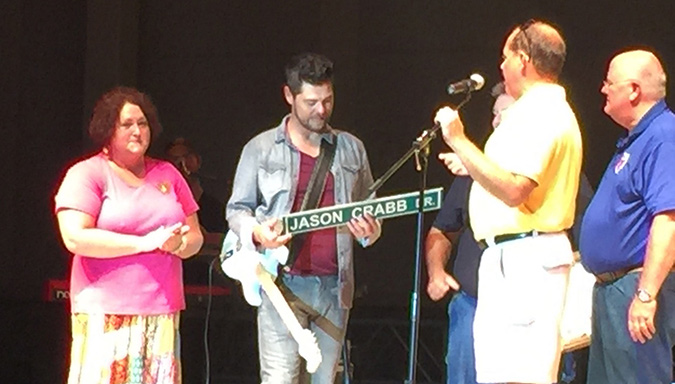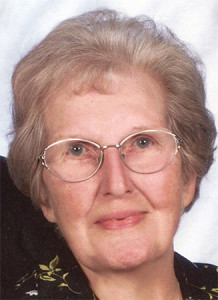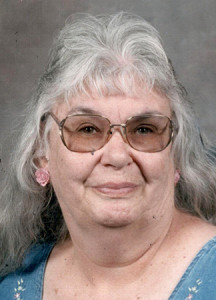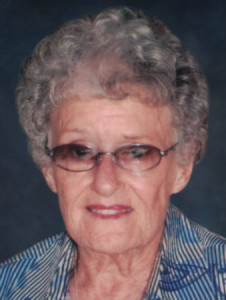Beaver Dam City-Wide yard sale Aug. 7-8
Fiscal Court discusses golf course year-end numbers

BD Amphitheater entrance named after Crabb

 The Beaver Amphitheater entrance was named after Beaver Dam native and Grammy award winning gospel singer Jason Crabb Saturday night as Crabb was presented with a replica sign at his concert Saturday night. (Photo submitted)[/caption]
Last Saturday night, during his homecoming concert, Jason Crabb was surprised by the City of Beaver Dam by having the entrance to the amphitheater named Jason Crabb Drive.
At the July 13 meeting of the Beaver Dam City Commission, the commission decided to name the entrance of the amphitheater after Crabb for being a great ambassador for Beaver Dam and Ohio County. The commission said it was also Beaver Dam's way of letting Crabb know how proud of him they are.
Crabb was presented a replica street sign during his concert by Beaver Dam Mayor Paul Sandefur and City Commissioners Charles Patton, Kevin Davis and Sandy Robinson.
After the concert, Crabb expressed his shock and gratitude on receiving the honor via his Facebook page.
"I can't even begin to tell you how shocked, honored and humbled I am! The Mayor of Beaver Dam, Ky., Paul Sandefur, along with the city commission surprised me tonight!" Crabb said. "They're naming a road Jason Crabb Drive!!!!! I wish my Grandma and Grandfather could be here. I'm so proud to be from Beaver Dam. I can't believe this!!"
The Beaver Amphitheater entrance was named after Beaver Dam native and Grammy award winning gospel singer Jason Crabb Saturday night as Crabb was presented with a replica sign at his concert Saturday night. (Photo submitted)[/caption]
Last Saturday night, during his homecoming concert, Jason Crabb was surprised by the City of Beaver Dam by having the entrance to the amphitheater named Jason Crabb Drive.
At the July 13 meeting of the Beaver Dam City Commission, the commission decided to name the entrance of the amphitheater after Crabb for being a great ambassador for Beaver Dam and Ohio County. The commission said it was also Beaver Dam's way of letting Crabb know how proud of him they are.
Crabb was presented a replica street sign during his concert by Beaver Dam Mayor Paul Sandefur and City Commissioners Charles Patton, Kevin Davis and Sandy Robinson.
After the concert, Crabb expressed his shock and gratitude on receiving the honor via his Facebook page.
"I can't even begin to tell you how shocked, honored and humbled I am! The Mayor of Beaver Dam, Ky., Paul Sandefur, along with the city commission surprised me tonight!" Crabb said. "They're naming a road Jason Crabb Drive!!!!! I wish my Grandma and Grandfather could be here. I'm so proud to be from Beaver Dam. I can't believe this!!"
Linda Fay Smeathers Frakes

 Linda Fay Smeathers Frakes, age 73, of Reynolds Station, passed away on Wednesday, July 22, 2015, at her home. Born to parents, Philip and Juanita Brown Smeathers on April 8, 1942, in Daviess County.
Linda enjoyed her time as a second driver on the road with her husband. They called themselves "professional tourists and drivers". She loved family dinners and holidays, gardening, quilting, geneology and especially church activities at St. John the Baptist, where she held many pastoral positions, including Bishop McRaith Diocesan Council, president of Parish Council and Liturgy, and played the organ for 18 years. She was presented the Sophia Award with her husband, Martin and loved her many pets.
She was preceded in death by her parents, her mother in 2000 and her father in 2001; a great-grandson, Matthew David Johnson, in December 2012; and a stepson, Mickey Frakes, on July 17, 2015.
She is survived by her loving husband, Martin J. Frakes, of 33 years; daughter, Candy Jerden (Mike), of Dallas, Texas; stepchildren, Kathy Jo Adams, of Clearwater, Fla., Mark Adams, of Greenville, S.C., Marty Frakes (Anita) and Lucy Miller (Mark), of Louisville; 13 grandchildren; 15 great-grandchildren; and many first, second and third cousins, including special cousins, Ron Wene (Bonnie), of Sail Creek, Tenn., Karlin Daniel, of Florida, Debra Strange, of Indianapolis, Ind., and Lynn Kenady (Dr. Dan), of Lexington.
A Funeral Mass will be at 12 p.m. Friday, July 24, at St. John the Baptist Catholic Church, Fordsville, with burial in Elmwood Cemetery in Owensboro. Visitation will be from 4 p.m. until 8 p.m. Thursday at Geary Funeral Home, Fordsville and after 9 a.m. Friday at the church. Prayers will be said at 7 p.m. Thursday.
Linda Fay Smeathers Frakes, age 73, of Reynolds Station, passed away on Wednesday, July 22, 2015, at her home. Born to parents, Philip and Juanita Brown Smeathers on April 8, 1942, in Daviess County.
Linda enjoyed her time as a second driver on the road with her husband. They called themselves "professional tourists and drivers". She loved family dinners and holidays, gardening, quilting, geneology and especially church activities at St. John the Baptist, where she held many pastoral positions, including Bishop McRaith Diocesan Council, president of Parish Council and Liturgy, and played the organ for 18 years. She was presented the Sophia Award with her husband, Martin and loved her many pets.
She was preceded in death by her parents, her mother in 2000 and her father in 2001; a great-grandson, Matthew David Johnson, in December 2012; and a stepson, Mickey Frakes, on July 17, 2015.
She is survived by her loving husband, Martin J. Frakes, of 33 years; daughter, Candy Jerden (Mike), of Dallas, Texas; stepchildren, Kathy Jo Adams, of Clearwater, Fla., Mark Adams, of Greenville, S.C., Marty Frakes (Anita) and Lucy Miller (Mark), of Louisville; 13 grandchildren; 15 great-grandchildren; and many first, second and third cousins, including special cousins, Ron Wene (Bonnie), of Sail Creek, Tenn., Karlin Daniel, of Florida, Debra Strange, of Indianapolis, Ind., and Lynn Kenady (Dr. Dan), of Lexington.
A Funeral Mass will be at 12 p.m. Friday, July 24, at St. John the Baptist Catholic Church, Fordsville, with burial in Elmwood Cemetery in Owensboro. Visitation will be from 4 p.m. until 8 p.m. Thursday at Geary Funeral Home, Fordsville and after 9 a.m. Friday at the church. Prayers will be said at 7 p.m. Thursday.
Frank Carpenter

 Frank Carpenter, 82, of Hartford, Ky., passed away Wednesday, July 22, 2015, at his residence. He was born on Dec. 16, 1932, in English, Ky., to the late Francis Marion Carpenter, Sr. and Minnie E. Patton Carpenter.
Mr. Carpenter retired from Peabody Coal Company, Sinclair Surface Mines, Drakesboro, Ky. He was a member of Beaver Dam Baptist Church and U.M.W.A. #1432, Central City, Ky. Frank served for 11 years on the Beaver Dam City Council, United We Stand America and United States Air Force (1952 – 1956) during the Korean Conflict. Frank was an avid Nascar and U of L fan, loved to fish and camp on the river and always had a garden.
He was preceded in death by his daughter, Jennifer L. Martin, in September 1995; baby brother, Jerry Don Carpenter, in October 1994; and foster parents, Jesse and Vera Daniel.
Survivors include his wife of sixty years, Michele Bell Carpenter, of Hartford; one daughter, Terri L. Brown, of Calvert City; two grandchildren, Aaron Scott (Emily) Brown, of Corydon, Ind., and Rachel L. Brown, of Clarksville, Tenn.; one great-grandson, Evan Scott Brown, of Corydon; one niece, Ruth (Bill) Conkwright, of Whitesville; six nephews, Joey Carpenter, of Beaver Dam, David D. Carpenter, of Hartford, Larry Daniel, of Winston Salem, N.C., Ken (Susan) Daniel, of Hartford, Rob (Donna) Bell, of Owensboro, and Mark (Melba) Bell, of Owensboro; one sister-in-law, Nora Mae Carpenter, of Hartford, and several great-nieces and -nephews.
Funeral service will be held at 11 a.m. Saturday, July 25, at Miller-Schapmire Funeral Home in Hartford, Kentucky with Rev. Glenn Armstrong officiating. Visitation will be Friday from 5 p.m. until 8 p.m. and Saturday from 9 a.m. until the time of the service at the funeral home. Burial will follow in Sunnyside Cemetery in Beaver Dam, Kentucky with Military Honors by Wesley C. Phelps Honor Guard, Ohio County, Ky.
The family requests expressions of sympathy take the form of contributions to Hospice of Ohio County, 1211 Main Street, Hartford, KY 42347.
Frank Carpenter, 82, of Hartford, Ky., passed away Wednesday, July 22, 2015, at his residence. He was born on Dec. 16, 1932, in English, Ky., to the late Francis Marion Carpenter, Sr. and Minnie E. Patton Carpenter.
Mr. Carpenter retired from Peabody Coal Company, Sinclair Surface Mines, Drakesboro, Ky. He was a member of Beaver Dam Baptist Church and U.M.W.A. #1432, Central City, Ky. Frank served for 11 years on the Beaver Dam City Council, United We Stand America and United States Air Force (1952 – 1956) during the Korean Conflict. Frank was an avid Nascar and U of L fan, loved to fish and camp on the river and always had a garden.
He was preceded in death by his daughter, Jennifer L. Martin, in September 1995; baby brother, Jerry Don Carpenter, in October 1994; and foster parents, Jesse and Vera Daniel.
Survivors include his wife of sixty years, Michele Bell Carpenter, of Hartford; one daughter, Terri L. Brown, of Calvert City; two grandchildren, Aaron Scott (Emily) Brown, of Corydon, Ind., and Rachel L. Brown, of Clarksville, Tenn.; one great-grandson, Evan Scott Brown, of Corydon; one niece, Ruth (Bill) Conkwright, of Whitesville; six nephews, Joey Carpenter, of Beaver Dam, David D. Carpenter, of Hartford, Larry Daniel, of Winston Salem, N.C., Ken (Susan) Daniel, of Hartford, Rob (Donna) Bell, of Owensboro, and Mark (Melba) Bell, of Owensboro; one sister-in-law, Nora Mae Carpenter, of Hartford, and several great-nieces and -nephews.
Funeral service will be held at 11 a.m. Saturday, July 25, at Miller-Schapmire Funeral Home in Hartford, Kentucky with Rev. Glenn Armstrong officiating. Visitation will be Friday from 5 p.m. until 8 p.m. and Saturday from 9 a.m. until the time of the service at the funeral home. Burial will follow in Sunnyside Cemetery in Beaver Dam, Kentucky with Military Honors by Wesley C. Phelps Honor Guard, Ohio County, Ky.
The family requests expressions of sympathy take the form of contributions to Hospice of Ohio County, 1211 Main Street, Hartford, KY 42347.
Genon F. Kasinger

 Genon F. Kasinger, 68, of Owensboro, passed away Tuesday, July 21, 2015, at Owensboro Health Regional Hospital. She was born in Daviess County to the late J.P. and Georgia Mae Roberts.
Genon was a dedicated homemaker and an active member of the Salvation Army Church where she was involved in many children’s programs and taught Sunday School. She also enjoyed reading, crossword puzzles and knitting blankets, sweaters, etc., for friends and family.
Genon is survived by her husband of 48 years, Calvin T. Kasinger, Jr.; children, Kim Kennedy (Matthew), of Owensboro, Holly Moore (David II), of Rockport, Ky., Brandon Kasinger (Brenda) and Bridget Williams (Greg), both of Owensboro; grandchildren, David Moore III (Grace), Katie Moore, Alisha Pierce, Hunter Kasinger, Ashley Williams and Breanna Kasinger; a great-granddaughter, Brooklyn Moore; a brother, Larry Roberts (Cheryl) of Owensboro; and her beloved dog, Chester.
The funeral service will be at 2 p.m. Friday, July 24, at Glenn Funeral Home and Crematory. Visitation will be from 3 p.m. until 8 p.m. Thursday and after 12 p.m. on Friday at the funeral home. Burial will be at Pleasant Grove Cemetery in Sorgho.
Memorial contributions may be made to the Salvation Army 215 S Ewing Rd, Owensboro, KY 42301.
Genon F. Kasinger, 68, of Owensboro, passed away Tuesday, July 21, 2015, at Owensboro Health Regional Hospital. She was born in Daviess County to the late J.P. and Georgia Mae Roberts.
Genon was a dedicated homemaker and an active member of the Salvation Army Church where she was involved in many children’s programs and taught Sunday School. She also enjoyed reading, crossword puzzles and knitting blankets, sweaters, etc., for friends and family.
Genon is survived by her husband of 48 years, Calvin T. Kasinger, Jr.; children, Kim Kennedy (Matthew), of Owensboro, Holly Moore (David II), of Rockport, Ky., Brandon Kasinger (Brenda) and Bridget Williams (Greg), both of Owensboro; grandchildren, David Moore III (Grace), Katie Moore, Alisha Pierce, Hunter Kasinger, Ashley Williams and Breanna Kasinger; a great-granddaughter, Brooklyn Moore; a brother, Larry Roberts (Cheryl) of Owensboro; and her beloved dog, Chester.
The funeral service will be at 2 p.m. Friday, July 24, at Glenn Funeral Home and Crematory. Visitation will be from 3 p.m. until 8 p.m. Thursday and after 12 p.m. on Friday at the funeral home. Burial will be at Pleasant Grove Cemetery in Sorgho.
Memorial contributions may be made to the Salvation Army 215 S Ewing Rd, Owensboro, KY 42301.
Ohio Co. real estate transfers for July 23
Gov. Beshear issues executive order relating to protection of Kentucky National Guard
Wayland Elementary staff to visit neighborhoods handing out treats

|
Location |
Approximate Time |
|
Reflections of Christ Church Parking Lot |
8:30 a.m.-8:45 a.m. |
|
Taffy Road Water Tower |
9 a.m.-9:15 a.m. |
|
Living Faith Baptist Church Parking Lot |
9:30 a.m.-9:45 a.m. |
|
1308 Old Main Street |
10:15 a.m.-10:30 a.m. |
|
Copper Court (Iron Mountain) |
10:45 a.m.-11 a.m. |
|
River Bend Apartments |
11:10 a.m.-11:25 a.m. |
Southern Elementary special-called SBDM meeting July 27
USDA accepting more farmland for wildlife habitat in Ky.

U.S. Department of Agriculture (USDA) Kentucky Farm Service Agency (FSA) Executive Director John W. McCauley this week announced an additional 1,100 acres of agricultural land in Kentucky is eligible for funding for wildlife habitat restoration.
The initiative, known as State Acres for Wildlife Enhancement (SAFE), is part of the USDA Conservation Reserve Program (CRP), a federally-funded voluntary program that for 30 years has assisted agricultural producers with the cost of restoring, enhancing and protecting certain grasses, shrubs and trees to improve water quality, prevent soil erosion and reduce loss of wildlife habitat. In return, USDA provides participants with rental payments and cost-share assistance. CRP has helped farmers and ranchers prevent more than 8 billion tons of soil from eroding, reduce nitrogen and phosphorous runoff relative to cropland by 95 and 85 percent respectively, and even sequester 43 million tons of greenhouse gases annually, equal to taking 8 million cars off the road.
In total, up to 400,000 acres of additional agricultural land will be eligible for wildlife habitat restoration funding through this SAFE announcement. The additional acres are part of an earlier CRP wildlife habitat announcement made by Secretary Vilsack. Currently, more than 1 million acres, representing 98 projects, are enrolled in SAFE nationwide.
“This year marks the 30th anniversary of the Conservation Reserve Program, which has not only resulted in significant soil and water improvements, but also greater populations of waterfowl, gamebirds and other wildlife native to the rural countryside,” said McCauley. “Here in Kentucky, 11,600 acres in the Early Successional/Bottomland Habitat are designed specifically to increase Northern Bobwhite Quail species habitat. Since it was first established in 2011, farmers and ranchers have enrolled 10,844 acres resulting in a significant increase in abundance of Bobwhite as well as other grassland songbird species. We hope to continue this progress by offering interested farmers and ranchers the opportunity to enroll another 1,100 acres in this project.”
Interested producers can offer land for enrollment in SAFE and other CRP initiatives by contacting their local FSA county office at http://offices.usda.gov. To learn more the 30th anniversary of CRP and to review 30 success stories throughout the year, visit www.fsa.usda.gov/CRPis30 or follow Twitter at #CRPis30. And for more information about FSA conservation programs, visit www.fsa.usda.gov/conservation.
The Conservation Reserve Program was reauthorized by 2014 Farm Bill, which builds on historic economic gains in rural America over the past six years, while achieving meaningful reform and billions of dollars in savings for taxpayers. Since enactment, USDA has made significant progress to implement each provision of this critical legislation, including providing disaster relief to farmers and ranchers; strengthening risk management tools; expanding access to rural credit; funding critical research; establishing innovative public-private conservation partnerships; developing new markets for rural-made products; and investing in infrastructure, housing and community facilities to help improve quality of life in rural America. For more information, visit www.usda.gov/farmbill.
Centertown Holiness Church/Central Grove Baptist Church VBS July 29-Aug. 1
Jobless rates down in 118 Ky. counties in June 2015
Norma L. Underwood

 Norma L. Underwood, 79, of Buck Creek, Ky., died Thursday July 23, 2015, at her home. Norma Lee Ridenour was born Feb. 26, 1936, in McLean County, Ky., to the late John Leslie and Birdie Williams Ridenour and was married to Garnett Underwood on Dec. 23, 1953.
Norma worked as a clerk at several different stores but was primarily a full-time mother and grandmother. She was a member of Livermore General Baptist Church and enjoyed fishing.
Survivors include her husband of 61 years, Garnett Underwood; three sons and daughter-in-laws: Kenny and Deerita Underwood, Chris and Joyce Underwood, and Stephen and Shannon Underwood, all of Buck Creek; five grandchildren: Justin and Blanca Underwood, Garrett and Anne Underwood, Nate and Jackie Underwood, Cadie Underwood, and Kellie Underwood; six great-grandchildren; a sister, Betty Price of Livermore; and a brother, Vaden Ridenour of Fort Meade, Fla.
Funeral services will be held at 10 a.m. Monday at Muster Funeral Homes, Livermore Chapel with the Revs. E.W. Greenwalt and Roy Day officiating. Burial will be in the Underwood Family Cemetery in McLean County. Friends may visit with Norma’s family from 4 p.m. until 8 p.m. Sunday and from 8 a.m. until services. Monday at Musters in Livermore.
Share your memories and photos of Norma at: musterfuneralhomes.com.
Norma L. Underwood, 79, of Buck Creek, Ky., died Thursday July 23, 2015, at her home. Norma Lee Ridenour was born Feb. 26, 1936, in McLean County, Ky., to the late John Leslie and Birdie Williams Ridenour and was married to Garnett Underwood on Dec. 23, 1953.
Norma worked as a clerk at several different stores but was primarily a full-time mother and grandmother. She was a member of Livermore General Baptist Church and enjoyed fishing.
Survivors include her husband of 61 years, Garnett Underwood; three sons and daughter-in-laws: Kenny and Deerita Underwood, Chris and Joyce Underwood, and Stephen and Shannon Underwood, all of Buck Creek; five grandchildren: Justin and Blanca Underwood, Garrett and Anne Underwood, Nate and Jackie Underwood, Cadie Underwood, and Kellie Underwood; six great-grandchildren; a sister, Betty Price of Livermore; and a brother, Vaden Ridenour of Fort Meade, Fla.
Funeral services will be held at 10 a.m. Monday at Muster Funeral Homes, Livermore Chapel with the Revs. E.W. Greenwalt and Roy Day officiating. Burial will be in the Underwood Family Cemetery in McLean County. Friends may visit with Norma’s family from 4 p.m. until 8 p.m. Sunday and from 8 a.m. until services. Monday at Musters in Livermore.
Share your memories and photos of Norma at: musterfuneralhomes.com.
Carolyn B. Cooper

 Carolyn B. Cooper, 74, of Hartford, died Friday, July 24, 2015, at Professional Care Health and Rehab in Hartford. She was born in Hartford to the late Kenneth and Annie Talley Burton.
Carolyn was retired from Montpelier Glove Factory and was a member of Calvary Hill Church.
She was preceded in death by her husband, John Austin Cooper; and a sister, Helen Marie Burton.
Survivors include two brothers; Kenneth “Kay” and his wife, Norma Burton, Carl and his wife, Dean Burton, all of Hartford; three nephews, Timothy Burton, Terry Burton and Jimmy Burton; four nieces, Joyce Grigsby, Carol Dean Ferguson, Shirley Render and Marilyn Hester.
Services are 2 p.m. Sunday at Bevil Bros. Funeral Home in Beaver Dam with Bro. Amos Alsman officiating. Burial will be in Calvary Hill Cemetery near Beaver Dam. Visitation will from 4 p.m. until 8 p.m. Saturday and from 9 a.m. until funeral time Sunday at the funeral home.
Online condolences may be made at: bevilbrosfuneralhomes.com.
Carolyn B. Cooper, 74, of Hartford, died Friday, July 24, 2015, at Professional Care Health and Rehab in Hartford. She was born in Hartford to the late Kenneth and Annie Talley Burton.
Carolyn was retired from Montpelier Glove Factory and was a member of Calvary Hill Church.
She was preceded in death by her husband, John Austin Cooper; and a sister, Helen Marie Burton.
Survivors include two brothers; Kenneth “Kay” and his wife, Norma Burton, Carl and his wife, Dean Burton, all of Hartford; three nephews, Timothy Burton, Terry Burton and Jimmy Burton; four nieces, Joyce Grigsby, Carol Dean Ferguson, Shirley Render and Marilyn Hester.
Services are 2 p.m. Sunday at Bevil Bros. Funeral Home in Beaver Dam with Bro. Amos Alsman officiating. Burial will be in Calvary Hill Cemetery near Beaver Dam. Visitation will from 4 p.m. until 8 p.m. Saturday and from 9 a.m. until funeral time Sunday at the funeral home.
Online condolences may be made at: bevilbrosfuneralhomes.com.
OC Eagle Soccer having ‘brown bag lunch’ sale July 27
Boil Water Advisory for part of Beaver Dam
Ky. Afield Outdoors: Water safety important now with rain swollen lakes and rivers

KSP Trooper Island camp celebrates 50 years of helping kids

Trooper Island, a free summer camp operated by the Kentucky State Police, is observing its 50th anniversary this year by doing what it does best: providing a fun, life-changing experience for underprivileged children from throughout the state.
Located on Dale Hollow Lake in Clinton County, the 34.5 acre island hosts around 700 campers each summer. It is estimated that more than 25,000 boys and girls between 10 and 12 years old have attended the program since 1965.
While attending the one-week sessions, the campers experience a structured environment that provides plenty of fresh air, good food, recreation and esteem-building activities designed to enhance citizenship skills and create good relationships with law enforcement officers. Throughout their stay, the campers are guided by KSP troopers and KSP civilian employees who volunteer during their off-duty time.
“Trooper Island is a showcase venue that occupies a special place in the heart of our agency,” explains KSP Commissioner Rodney Brewer. “As a long-term program of service to the youth of Kentucky, it offers a place where the tensions and turmoil of everyday lives can be forgotten and, for one week, young people can experience a touch of hope and the desire for a better future. It’s a positive way to impact the lives of the generations of tomorrow.”
While it’s a model of success today, Trooper Island’s beginnings are more humble. Its initial concept can be traced back to James E. “Ted” Bassett, III, a Lexington native who served as Director of the Kentucky State Police from 1963 to 1967. (He is best known for his 40-year career with the Keeneland Association where he served as president and general manager, chairman of the board and trustee.)
Bassett felt that KSP could have an impact on rising rates of juvenile delinquency by providing a life-changing experience where boys could bond with troopers and learn respect for the law. It was not to be a halfway house for juvenile offers. He felt that KSP did not have the training or professional credentials to attempt rehabilitation, but he was convinced that the camp could provide incentives that might help boys from getting into trouble.
“We want the youngsters to know that KSP are their friends, not their foes,” said the late KSP Lt. John Ed Tomlinson, a driving force behind the project, in a 1965 newspaper interview. “We are convinced that a little time spent with these young people on a close personal basis will have a desirable impact.”
After lengthy negotiations with the U.S. Army Corps of Engineers, which owned the property, the island was leased to KSP for a dollar per year for 99 years. Two challenges remained however, one financial and one physical.
As a public agency, KSP could not use tax dollars to operate the camp. Bassett had the island registered with the Kentucky Secretary of State as a non-profit, charitable organization on Feb. 19, 1965, which permitted appeals to the general public for support.
One of the early supporters included Kentucky’s Optimist Clubs, who sold bumper stickers for five dollars each and honorary titles to one-yard plots on the island for one dollar each. Kentucky Gov. Edward T. Breathitt bought the first bumper sticker and a Louisville physician, Dr. James W. Bryan, purchased the first honorary land title.
Other financial support came from Kiwanis Clubs, Lions Clubs, Rotary Clubs, the Keeneland Association and churches throughout the state.
The physical challenge posed problems as well. The island had been abandoned for 15 years and was in rough shape. In early 1966, Lt. Tomlinson and 25 KSP troopers began to clear the land with shovels, axes and machetes.
Despite their efforts, with campers scheduled to arrive in early July, the camp still lacked even the basics. At the last minute, members of the Radcliff Optimist Club secured a loan of tents, cots, chairs, tables and recreation equipment from the U.S. Army at Fort Knox, including two field kitchens and two GI cooks to operate them.
The island opened for its first camping season just after July 4, 1966 staffed by five troopers. Both campers and troopers were housed in tents. A formal schedule did not exist. Fun was the only goal.
Since that first day, Trooper Island has made great strides. It now features modern housing, dining, recreation and dock facilities It offers a full curriculum of activities from fishing, canoeing, archery and crafts to courses in personal hygiene, drug prevention, water safety, environmental awareness, patriotism and self-esteem enhancement.
Each day begins with a routine that started during the early days of the camp: raising the U.S. flag and reciting the Pledge of Allegiance. Both uniformed and civilian personnel of the agency volunteer as counselors serving as positive role models to the campers.
“From the beginning, the success of Trooper Island has depended on support from the private sector,” notes Brewer. “In 1966, the cost of transporting, feeding and caring for a camper for one week was $10. Today, it is considerably more. We greatly appreciate all of the business, civic and church organizations that contribute time, talent and resources to this effort. We couldn’t continue without them.”
KSP’s 16 posts also conduct local fundraising events such as golf tournaments and motorcycle runs to benefit the camp.
The camp’s major fundraiser is an annual vehicle raffle that culminates on the last day of the Kentucky State Fair in August when a winner is drawn. This year the raffle features a 2015 GMC Sierra 1500 Crew Cab SLE pickup truck. Tickets are just $10 each and are available at any KSP post or online by debit or credit card payment at trooperisland.org. Only 20,000 tickets will be sold and ticket holders do not have to be present at the drawing to win.
“It takes a lot to keep Trooper Island operating each year,” Brewer admits. “But it’s well worth the effort. It’s an investment in the future that we can’t afford to ignore.”
Elma Catherine Alsip

 Elma Catherine Alsip, 89, of Owensboro, Ky., passed away Friday, July 24, 2015, at Heartford House in Owensboro, Ky. She was born Dec. 31, 1925, to the late Robert Lewis and Elizabeth Earl Macke in Beech Grove, Ky.
Mrs. Alsip was formerly employed by General Electric, Southern Bell Telephone & Telegraph, Welborn’s Florist and was a member of Concord Baptist Church. She enjoyed gardening, working with flowers and being outdoors especially fishing with her husband.
Mrs. Alsip was preceded in death by her husband, Yewell C. Alsip, on Feb. 1, 2009; one grandson, Gary Duane Alsip, in 1970; and one brother, Charles Lewis.
Survivors include one son, Roger Dale (Jeanne) Alsip, of Hartford; one sister, Betty (Sam) Goatee, of Centertown; one sister-in-law, Opal Lewis, of Dayton, Ohio; several nieces, nephews and great nieces and nephews. She will be deeply missed by her second family, Ron and Carol Ecleberry, of Owensboro, and her many friends at One park Place.
Funeral services will be held at 1 p.m. Monday, July 27, at Miller-Schapmire Funeral Home in Hartford, Ky., with Bro. Allen Shouse officiating. Visitation will be Monday from 11 a.m., until the time of the service at the funeral home. Burial will follow in Oakwood Cemetery in Hartford, Ky.
Expressions of sympathy are requested to take the form of contributions to Hospice of Western Kentucky, 3419 Wathens Crossing, Owensboro, KY 42301.
Elma Catherine Alsip, 89, of Owensboro, Ky., passed away Friday, July 24, 2015, at Heartford House in Owensboro, Ky. She was born Dec. 31, 1925, to the late Robert Lewis and Elizabeth Earl Macke in Beech Grove, Ky.
Mrs. Alsip was formerly employed by General Electric, Southern Bell Telephone & Telegraph, Welborn’s Florist and was a member of Concord Baptist Church. She enjoyed gardening, working with flowers and being outdoors especially fishing with her husband.
Mrs. Alsip was preceded in death by her husband, Yewell C. Alsip, on Feb. 1, 2009; one grandson, Gary Duane Alsip, in 1970; and one brother, Charles Lewis.
Survivors include one son, Roger Dale (Jeanne) Alsip, of Hartford; one sister, Betty (Sam) Goatee, of Centertown; one sister-in-law, Opal Lewis, of Dayton, Ohio; several nieces, nephews and great nieces and nephews. She will be deeply missed by her second family, Ron and Carol Ecleberry, of Owensboro, and her many friends at One park Place.
Funeral services will be held at 1 p.m. Monday, July 27, at Miller-Schapmire Funeral Home in Hartford, Ky., with Bro. Allen Shouse officiating. Visitation will be Monday from 11 a.m., until the time of the service at the funeral home. Burial will follow in Oakwood Cemetery in Hartford, Ky.
Expressions of sympathy are requested to take the form of contributions to Hospice of Western Kentucky, 3419 Wathens Crossing, Owensboro, KY 42301.